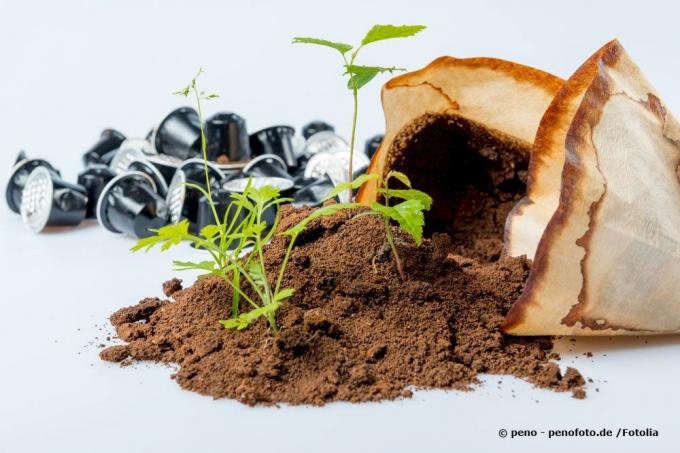
table of contents
- Coffee grounds as fertilizer
- Blackberries
- Angel trumpet
- Geraniums
- Cucumber
- blueberries
- Currants
- pumpkin
- rhododendron
- tomatoes
- zucchini
More and more hobby gardeners fertilize their plants with coffee grounds, and rightly so! Because the supposed waste product contains many important nutrients, such as phosphorus, nitrogen and potassium. Coffee is therefore not only a cost-effective, but also environmentally friendly fertilizer. In this article, we have summarized for you which plants coffee is particularly suitable as a fertilizer.
Coffee grounds as fertilizer
Blackberries
Blackberries are known to produce a variety of blue-black fruits. However, professional care is essential for this, which in turn includes regular fertilization. The forest berries are best fertilized with a special berry fertilizer, as this has a high potassium content and is therefore perfectly tailored to the needs of the plant. Since the blackberries feel most comfortable in acidic soil and a pH value of around 5, they can also be supplied with coffee fertilizer. It is fertilized in spring and, if necessary, before the ripening period.
- Latin name: Rubus sectio Rubus
- Synonyms: wild berries, black berries
- Genus: Rosaceae
- Location: sunny or partially shaded
- Soil: moist, humic, well ventilated, slightly acidic
tip: Organic fertilizers such as cow or horse manure are also suitable for fertilizing blackberries. You can also fertilize with blue grain, whereby you should pay attention to a modest dosage.

Angel trumpet
The angel's trumpet not only has an extremely high need for water but also for nutrients. Accordingly, it regularly requires water and fertilizer, whereby a water-soluble complete fertilizer made of nitrogen, potassium and phosphorus is best. These nutrients are also found in coffee grounds, which is why they can also be used. The coffee fertilizer is best worked into a layer of mulch, which is recommended for the angel's trumpet anyway.
- Latin name: Brugmansia
- Synonyms: Tree of the Evil Eagle, Burundanga
- Genus: Nightshade family (Solanaceae)
- Location: sheltered from the wind, avoid midday sun
- Soil: rich in nutrients

Note: Coffee grounds are not only suitable as a fertilizer, but also as a natural home remedy for snails. Since angel's trumpets like to be attacked by the pests, the use of coffee fertilizer is all the more recommendable.
Geraniums
Geraniums are known for their gorgeous, colorful flowers. In order for the blossoms to develop in the best possible way, in addition to the appropriate choice of location, regular fertilization is also necessary. The geraniums are usually fertilized for the first time when they are planted, because at this point a long-term fertilizer is worked into the soil. They are then fertilized with a liquid fertilizer either weekly or every 14 days. If the plants are also given coffee fertilizer, their nutritional needs are certainly met.
- Latin name: Pelargonium
- Synonyms: Storchschnabel, Brennende Lieb (South Tyrol)
- Genus: cranesbill family
- Location: full sun to partial shade
- Soil: well drained and rich in nutrients
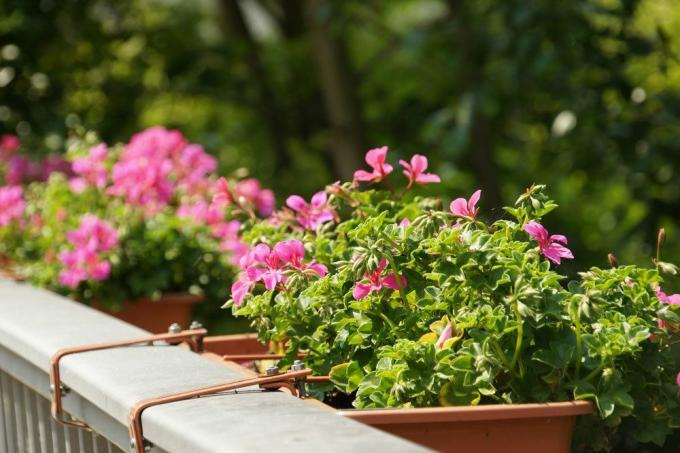
Cucumber
Organic fertilizers such as manure are particularly suitable for cucumbers. They can also be fertilized with rock flour or nettle liquid without any problems. The latter can, by the way self made and is therefore a particularly cost-effective choice. The plants also enjoy a layer of mulch, which keeps the moisture in the soil. The coffee can be easily incorporated into this and provide the cucumbers with additional nutrients.
- Latin name: Cucumis sativus
- Synonyms: Kukumber
- Genus: Cucurbitaceae
- Location: full sun and sheltered from the wind
- Soil: humus and loose
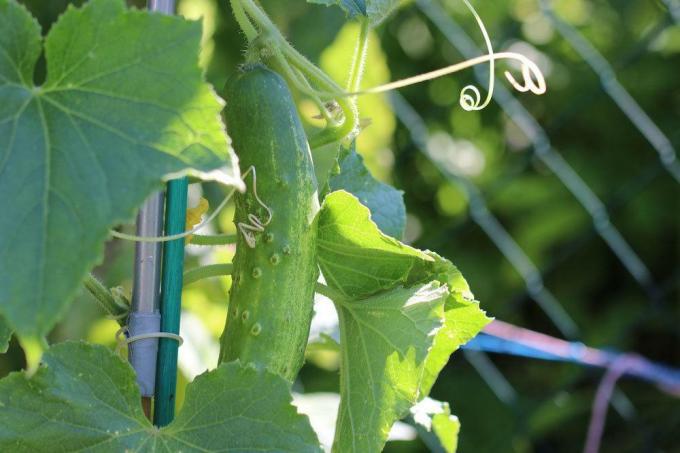
blueberries
When fertilizing blueberries, their needs must be taken into account, because they prefer a pH value in the soil between 4.0 and 5.0. In order to ensure that the pH value does not increase too much, you should refrain from using calcareous fertilizers. The situation is different with coffee grounds, however, because they keep the pH value low and the soil acidic. So that the plants bear abundant fruit from July to September, they are fertilized annually in spring and in June for blossoming and fruiting. A low-lime fertilizer is best suited for this rhododendron and azaleas plus some coffee grounds.
- Latin name: Vaccinium myrtillus
- Synonyms: mollberry, wildberry, blueberry
- Genus: Blueberries (Vaccinium)
- Location: full sun and sheltered
- Soil: acidic sandy soil, permeable and free of lime

Currants
Currants are considered to be comparatively undemanding, but they too enjoy regular fertilizer delivery. A special berry fertilizer is best suited for this, but compost or manure also provides the plants with plenty of nutrients. If you fertilize the currants organically with compost or manure, you can also enrich it with coffee grounds. The timing of fertilization is also important, because currants are fertilized for the first time before they sprout in March. They are then fertilized from April to May and provided with a portion of nutrients for the last time in autumn.
- Latin name: Ribes
- Synonyms: Red currant, Meertrubeli, Ahlbeere
- Genus: Gooseberry Family (Grossulariaceae)
- Location: sunny or partially shaded
- Soil: moist, rich in humus and nutrients

tip: The shallow-rooted currant benefits particularly from a layer of mulch.
pumpkin
Not only does the pumpkin take up a lot of space, it also requires at least six hours of sunlight per day. In order to support the growth as best as possible, regular fertilization is also recommended. Pumpkins are best fertilized once a week with a nitrogen-rich complete fertilizer, which is mixed into the irrigation water once a week. An environmentally friendly alternative is compost, which provides the plant with long-term nutrients. In order to improve the compost a bit, coffee can be incorporated into this.
- Latin name: Cucurbita
- Synonyms: melon fruit
- Genus: Cucurbitaceae
- Location: full sun and sheltered
- Soil: moist, rich in nutrients and humus
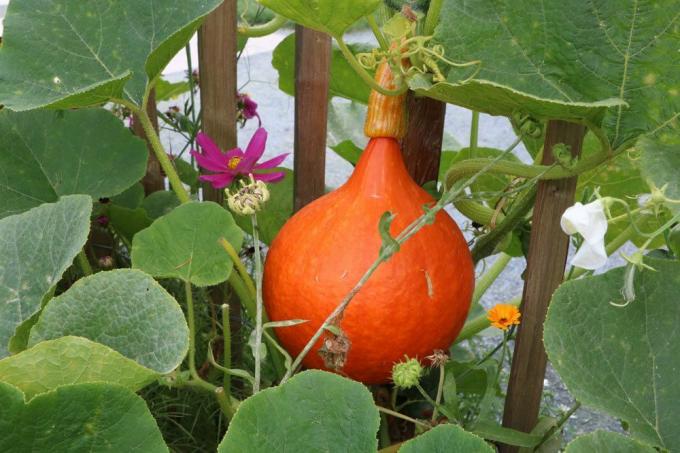
rhododendron
The rhododendron is particularly impressive because of its biodiversity, as around 1000 different species of rhododendron are known around the world. While some of these species can reach a height of several meters, others grow into small flowering shrubs. When caring for it, not only the high moisture requirement must be taken into account, because the plant also needs regular fertilization. There are special fertilizers for the rhododendron, but coffee is also suitable for the heather family. This is best mixed with horn meal and worked flat into the ground.
- Latin name: rhododendron
- Synonyms: Alpenrose, Rosenbaum
- Genus: Heather family (Ericaceae)
- Location: avoid direct sun
- Soil: loose, humic and acidic

tomatoes
Tomatoes have the decisive advantage that they can be grown both outdoors and in pots on the balcony. They are also considered to be relatively easy to care for, so that with a little skill, even inexperienced hobby gardeners can expect a high-yielding harvest. One of the most important factors is a balanced supply of nutrients to the plants, because tomatoes are one of them Heavy consumers. To ensure that your nutritional needs are always met, you should fertilize tomatoes regularly. A variety of fertilizers are available for tomato plants, such as liquid fertilizer or compost. In addition, tomatoes can be fertilized with coffee grounds by simply working them into the mulch layer.
- Latin name: Solanum lycopersicum
- Synonyms: candy apples, paradise apple, tomatoes
- Genus: Nightshade family (Solanaceae)
- Location: full sun and warm
- Soil: nutrient-rich and loose
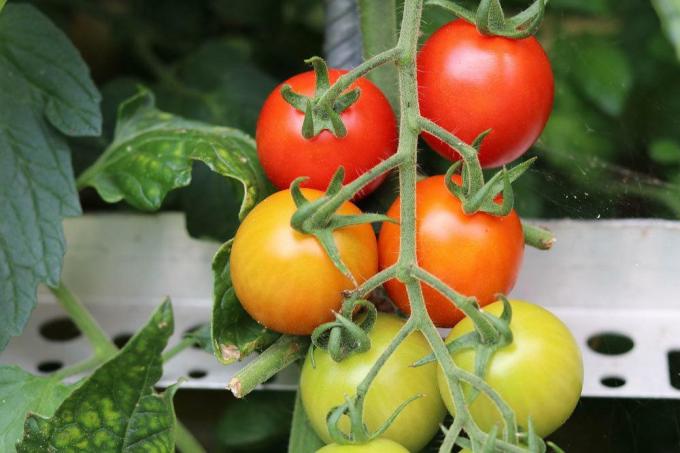
zucchini
In addition to tomatoes and peppers, zucchini can also be grown in the home garden without any problems. Caring for the plant includes not only regular watering, but also a balanced supply of nutrients. The zucchini need most of the nutrients from the beginning of June to mid-August, which is why you should fertilize regularly during this time. A conventional tomato or cucumber fertilizer, but also organic fertilizers such as nettle liquid, stone meal or horn shavings are suitable for fertilization. Coffee can also be used as fertilizer, which is mixed into a layer of mulch, for example.
- Latin name: Cucurbita pepo
- Synonyms: Zucchetti
- Genus: Cucurbitaceae
- Location: sunny and warm
- Soil: well drained, humus and rich in nutrients




